Sighisoara, in Romania’s Transylvania region, has beautifully preserved medieval city walls, incorporating nine fascinating towers. Let’s visit the towers in clockwise order, starting with the most famous.
The clock tower is the citadel’s main tower, and is intentionally located at what was considered a sacred compass point, the east. It’s easy to see from a glance that its robust, chunky lower section is from a much earlier time than its very tall and spindly tiled roof, complete with mechanical clock. Perfect for sturdy defense, the lower part was built in the 13th-14th centuries. Starting out plain, it gained increasingly elaborate higher floors during the 16th century to create a tower body that’s 30 meters high.
What then rises above it is a 34 meter roof, a baroque fantasy created by west European traveling craftsmen – from Tyrol, Veit Gruber, and from Salzburg, Filip Bonge. They built it when carrying out reconstruction on the tower, after a fire coursed through the city in 1676.
The four smaller spires at the corners of the big central one signify that Sighisoara had “jus gladii,” meaning the entitlement to impose capital punishment. Right on top of the central spire is a gilded ball said to house a text by Georgius Krauss named “The Chronicle of the Clock Tower” along with other documents describing the city’s history and that of the region’s ethic Germans, a group that dominated the city in its early times. The multicolored, geometrical tile patterns on the tower roof are relatively recent, dating from a renovation in 1894 that the Leonhardt brothers carried out.
The clock tower forms the main gateway to the central walled city, and over the centuries it became reinforced by additional fortifications and battlements, creating a barbican that the modern visitor walks through. The series of battlements overarches a steeply sloping cobbled passageway rising up to the tower. For a part of the way, a wooden banistered walkway runs up one side. It’s called the “old women’s corridor,” and was added in 1844 in order to help elderly visitors.
Looking up at the clock, you’ll certainly notice the original 17th century figurines which still move around inside it, even though the actual mechanism is not original but an electric system installed in 1964. There are two clock faces, one looking inward over the city’s main square and one staring outward over the lower town that’s outside the walls.
The outward-facing clock facade features seven oak figures carved by Johann Kirchel from Königsberg. They change each midnight to show what day it is. On Sunday it’s a sun figure with a head surrounded with golden rays. Monday is hunting goddess Diana, with a crescent shaped moon over her head that symbolizes silver. The Tuesday figure is the war god Mars, with a symbol for iron topping his head. On Wednesday, Mercury looks out with a winged helmet, surmounted with a symbol for the metal mercury. Jupiter follows on Thursday, gripping tiny signs for lightning and thunder, with the sign for tin above him. On Friday it’s Venus, goddess of love, with a symbol for copper, a metal associated with passion. On Saturday it’s Saturn, the agricultural god, with the symbol of lead above him.
Below them are a drummer with a metal drum that he hits each hour, and a bushy-bearded and bare-chested executioner who holds up both arms. His hands used to contain an ax and a whip.
The clock face that looks inward across the central city is dominated by two figurines: one holding scales representing justice, and a blindfolded one with a sword who stands for impartiality. There is also a drummer. And there are two small figures looking like cherubs, who emerge alternately from their windows at 6 in the morning and 6 in the evening. The one that’s out in the night hours holds torches, and the daytime one holds a burning heart and has a flame atop her head.
The chances to see the figurines from inside, and to reach a gallery at the top from where you can view the city, are the main reasons to visit the history museum housed within the tower. Check out the chamber that the seven day-figures rotate inside. Be warned: the tower staircase is tightly winding and narrow. Buy a joint ticket and you can also peruse the torture chamber in the tower, including racks, stocks and shackles, and the Medieval Arms Collection located on the main square right by the tower.
Sighisoara’s city walls boast several other towers. Each of them used to be the responsibility of a different craftsmen’s guild, important city institutions in the middle ages. They’d always have between four and six people on guard at every tower.
Moving clockwise, the one after the Clock Tower is the Tanners’ Tower (Turnul Tabacarilor), which is from the 13th or 14th century. It’s shaped like a prism, and its top stands at a slant. It is believed to have survived the fire of 1676 unscathed.
The Tinsmiths’ Tower (Turnul Cositorarilor) has a bottom section built in the 13th century that is square. Subsequent additions had different shapes: it has a pentagonal trunk, then a wider, eight-sided section, and its tiled roof is hexagonal.
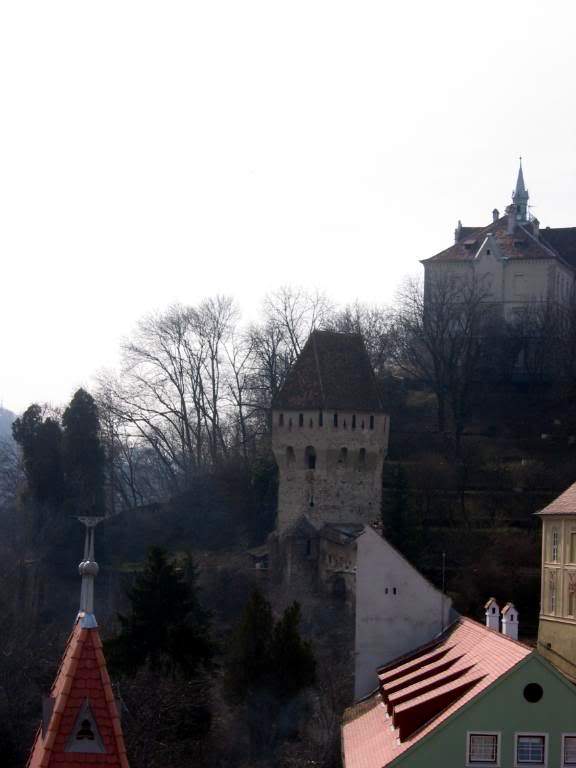
The Tinsmiths’ Tower has a hexagonal roof over an eight-sided upper section, a pentagonal trunk and a square base
Next along, the Ropers’ Tower (Turnul Franghierilor) is simpler: a square, 14th-century structure. The next two towers are the closest to each other. The rather bluff Butchers’ Tower (Turnul Macelarilor) is from the 15th century.
The more delicate, 14th-century Furriers’ Tower (Turnul Cojocarilor) has a wider top floor, whose lower part features openings from which city defenders could douse invaders with boiling hot oil. A gateway and homes have become built into the tower’s sides.
The next one is the most massive tower other than the Clock Tower. The Tailors’ Tower (Turnul Croitorilor) is broad and has two openings in its bottom, which traffic circulates through to this day. The sheer size of the tower reflects the fact that tailors were among the richest set of craftsmen in the medieval Sighisoara. While the tower was originally built in the 13th-14th centuries, the Tailors’ Tower has an upper section that was built anew after it was destroyed in the fire of 1676. It was being used at the time as a gunpowder storage space, meaning that when the fire hit, it exploded. The upper part as it stands today has openings in the downward-facing part of the base, from which boiling oil could be poured on invaders.
The Cobblers’ Tower (Turnul Cizmarilor) is next. Distinguishable by the pair of lookout turrets on its main roof, the tower was rebuilt in 1681 following its destruction in the 1676 fire. For a spell after World War II, this tower served as an archive space for documents. At that time, the windows were made bigger. A wooden staircase on the outside of the tower is an addition from 2001.
Last in the clockwise sequence, before coming back to the Clock Tower, is the Blacksmiths’ Tower (Turnul Fierarilor). Viewed from the city center inside the city walls, it appears nothing but a stump. But it looks much bigger from outside the walls, as it was built into a very steep slope. The tower dates from 1631, making it something of a youngster in comparison with its peers.
Written by and photos by David Hill for EuropeUpClose.com

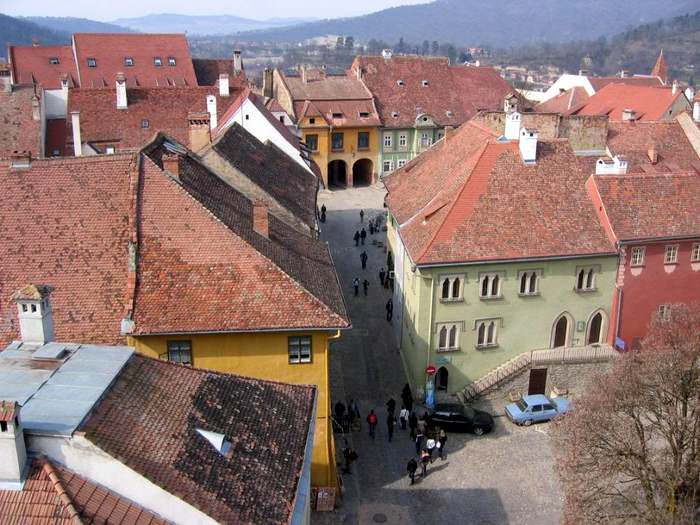
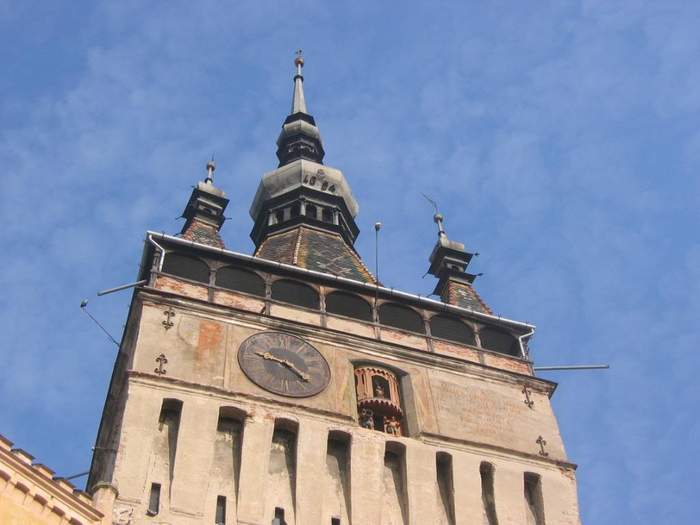
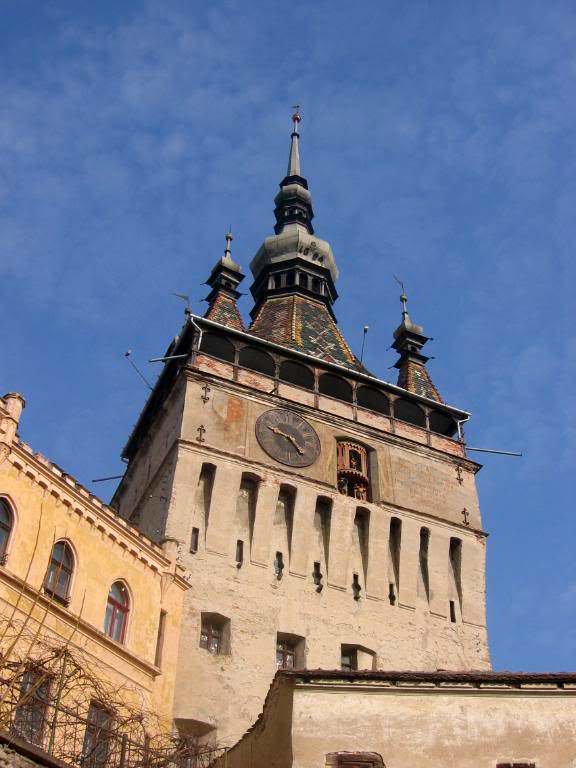
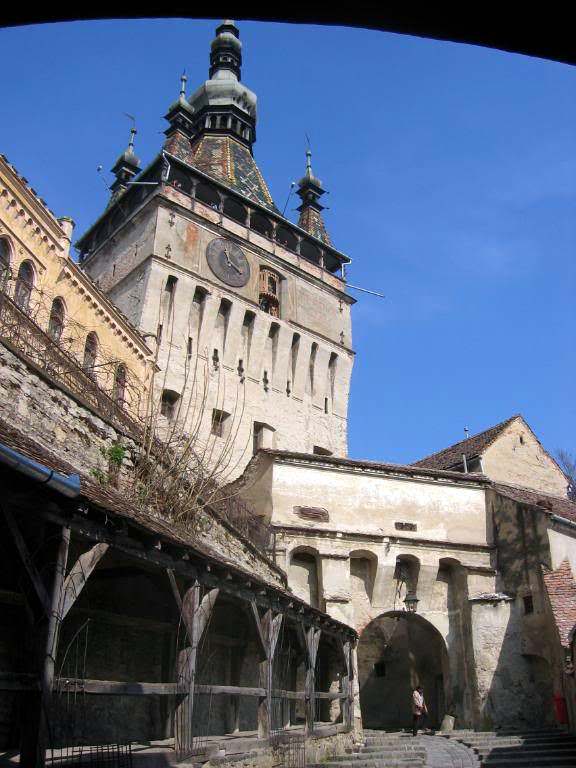

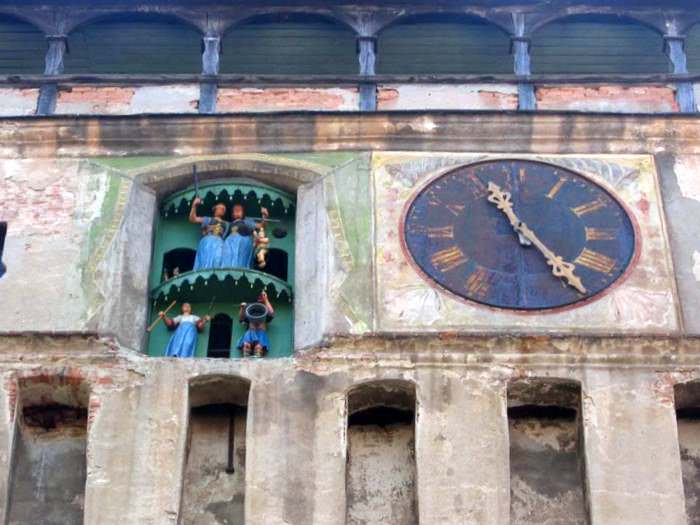
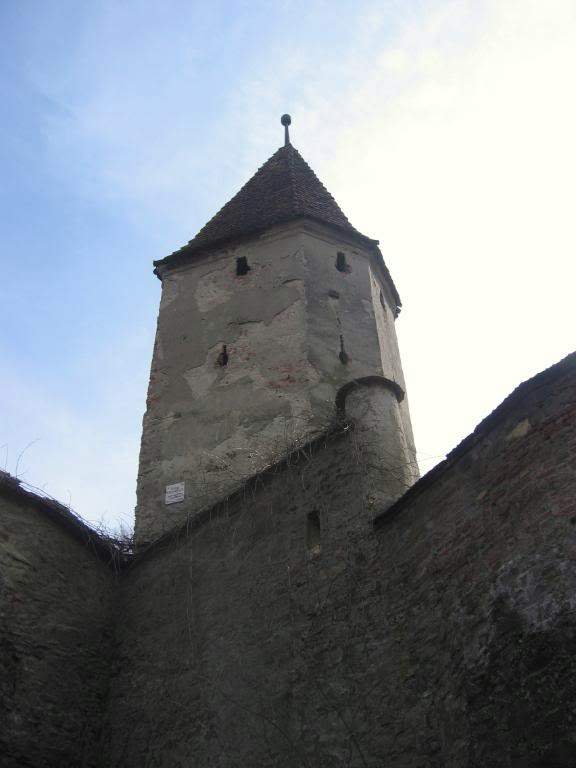


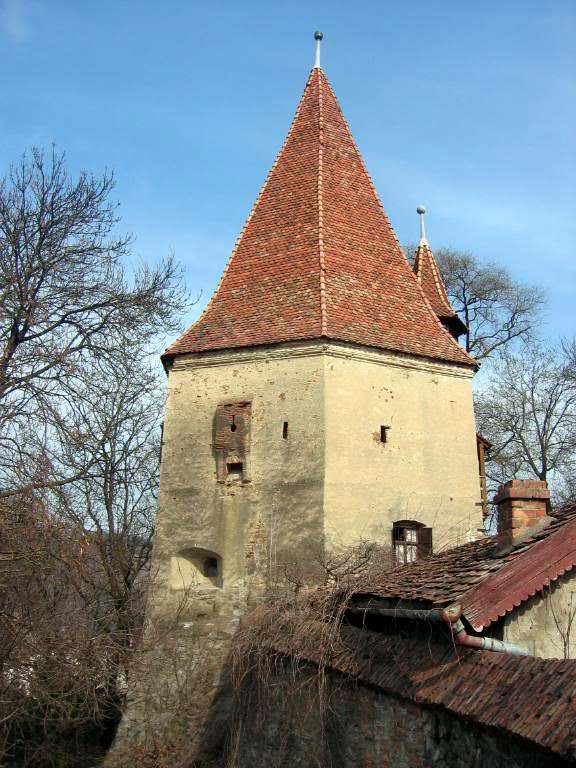
Ion Dima
Wednesday 17th of June 2015
Thank you David for this article. I have to mention that Romania is a beautiful undiscovered country. There are a lot`s of things to see and Sighisoara is a nice medieval towns. It is very nice to take a stroll on the cobbled street of the Fortress of Sighisoara but i`m very shore that you would love a trekking tour in The Carpathians or a biking tour through Transylvania remote villages.
Stephen Garone
Friday 5th of June 2015
Wonderful post! A really interesting read. Thanks!
Terri Fogarty
Sunday 7th of June 2015
Thank you. David Hill is our Romania expert. He has written several posts on this interesting country. Just search for Romania on the top right under the photos and you will find a treasure trove.